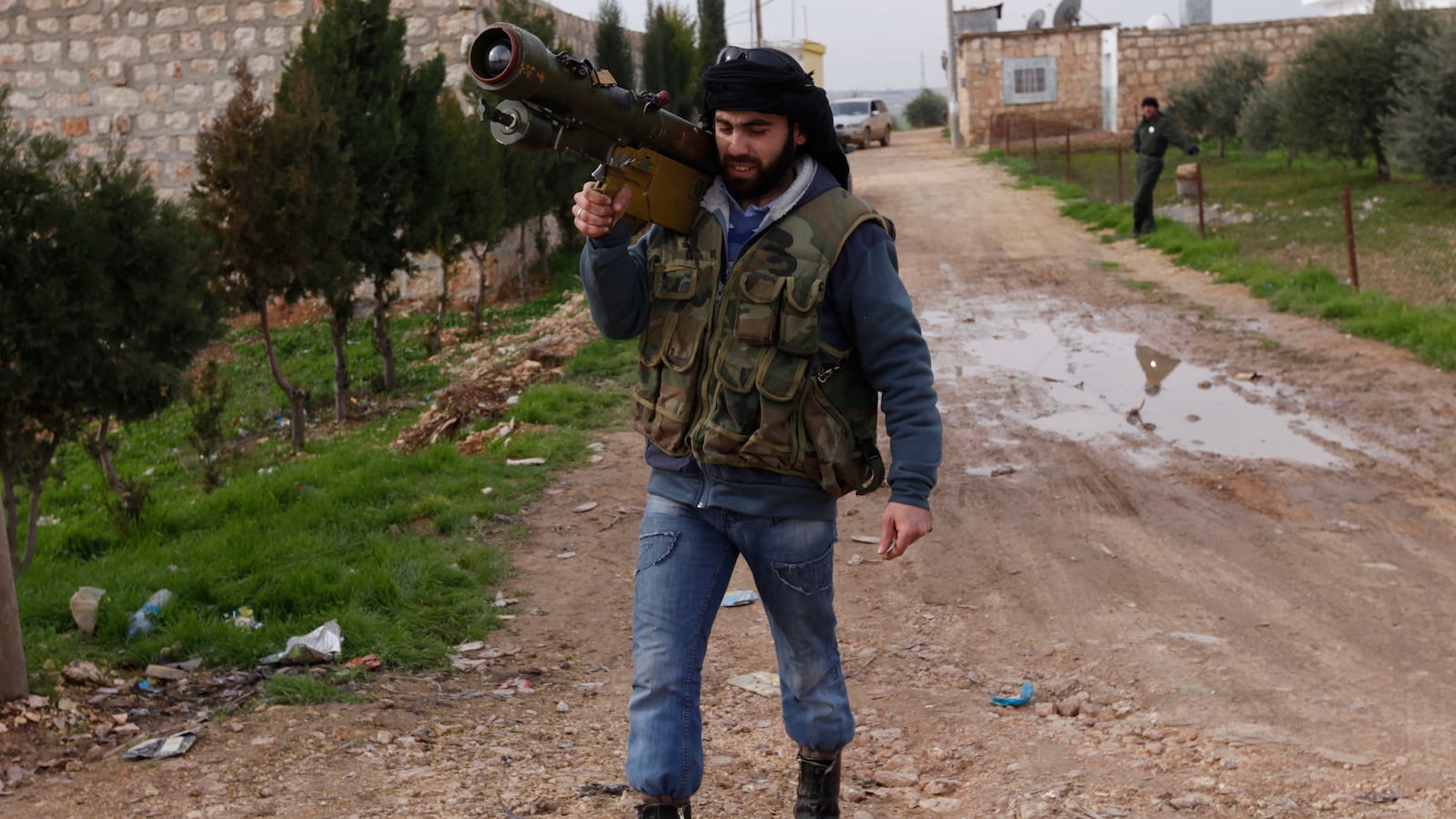With an already tenuous ceasefire in Syria on the brink of collapse, U.S. officials are concerned that rebel groups could make a new push to acquire shoulder-fired missiles, which could then fall into the hands of ISIS and threaten U.S. and coalition aircraft.
The lightweight missiles, which are easy to use and transport, also could cross Syria’s borders and threaten civilian aircraft in Jordan and in Egypt, where ISIS is expanding its presence, three officials said. ISIS claimed responsibility for the downing of a Russian jetliner over the Sinai last November. While U.S. intelligence agencies concluded that the group had brought down the plane with a crude bomb, the attack demonstrated ISIS interest in targeting civilian aviation.
The missiles, known as man-portable air-defense systems, or MANPADs, have introduced an unpredictable and hard-to-defend element to the battlefield. U.S. officials have long resisted arming the rebels with MANPADs, fearing they’ll be obtained by Islamic militants in a country where the U.S. has little ability to control the flow of weapons.
The CIA believes rebels have obtained a small number of MANPADs, but some fear the prospect of Russian resurrecting its air campaign against Assad’s opponents will push desperate rebels to look for MANPADs anywhere they can find them—including the black market.
“There is definitively concern about it,” one defense official told The Daily Beast of the ISIS potential to acquire the weapons, either from Syrian regime stockpiles or rebel groups that have been weakened by Russian airstrikes. “If they were to be introduced, there is a real worry that ISIS would target the coalition and eventually target civilian aircraft.”
Gulf countries, led by Saudi Arabia, have pushed for giving more MANPADs to the rebels, arguing that they would reduce the efficacy of the Syrian and Russian air forces. In general, the Russians have targeted rebel forces trying to overthrow Syrian President Bashar al-Assad, rather than focusing their fire on ISIS.
Calls to further arm the rebels quieted once the cessation of hostilities took effect two weeks ago and Russian airstrikes against rebel forces decreased. Now, with the ceasefire collapsing, U.S. officials said they’re concerned rebels will try to acquire more MANPADs through the black market. Or worse, coalition partners in the Gulf could try to help arm the rebels, fraying tensions between the U.S. and its allies in the region.
“Either the coalition or the rebels could get frustrated and reach out to other channels,” a second defense official explained.
Officials have long been concerned about the proliferation of the weapons in Syria.
“The place is awash in MANPADs,” Director of National Intelligence James Clapper told reporters in Washington on Monday. Clapper said that an “active procurement network,” as well as a “black market” were responsible for many of the weapons that have ended up in the country.
“Syria is indeed a hotbed of illicit MANPADS activity and has been for several years now,” Matt Schroeder, a senior researcher with the Small Arms Survey, which tracks the movement and use of the weapons, told The Daily Beast. “We have identified eight different models of MANPADs in Syria since 2012, including recent-generation systems not previously seen outside of government control. Some of these MANPADS are significantly more capable than the missiles most commonly found on the black market.”
Most of the weapons in Syria are of Russian, Chinese, or Soviet design, the group reports.
Schroeder said current evidence shows that armed groups are getting the weapons from domestic sources, including looted Syrian government depots, as well as from external sources. Determining precisely where the MANPADs have come from has been difficult, though, because rebels or others along the supply chain have painted over markings on the launch tubes, which is what researchers use to trace the illicit weapons, Schroeder said.
“The danger that some of the MANPADS currently in Syria could end up in other countries is very real,” Schroeder said. “Most MANPADS are about 5 feet long and weigh less than 50 pounds—small enough to fit in a small boat, the bed of a pickup truck, or even the backseat of a car. Preventing their movement across borders in a place like Syria is nearly impossible.”
As of 2011, the U.S. government had identified 40 civilian aircraft struck by MANPADs, causing 28 crashes and more than 800 deaths, according to the Small Arms Survey.
So far, U.S. officials believe only a handful of MANPADs have been used in Syria. The Small Arms Survey says more than 1 million of the systems have been produced since the late 1960s, by manufacturers in more than two dozen countries.
“Video footage featuring stockpiles of multiple launch tubes reveals that anti-government forces have acquired at least dozens of MANPADS, but existing data sources do not permit extrapolation beyond this rough minimum estimate,” the group said in a 2014 report.
But even the relatively small number used in Syria have had a significant effect. In the last month alone, Syrian opposition forces have brought down two Syrian warplanes, in attacks that the Syrian army blamed on MANPADs.
The Syrian government air campaign, while deadly, has been smaller than Russia’s and used mostly helicopters and cluster bombs. But in the early years of the war, the rebels were able to bring down Syrian aircraft, even if just occasionally, which gave a huge morale boost to the forces fighting Assad.
The most commonly used MANPAD in Syria is the Chinese-developed FN-6, which first appeared in the country in 2013 when a Syrian Air Force M-18 was shot down near Aleppo. The Free Syrian Army also has used the FN-6 to bring down regime helicopters.







